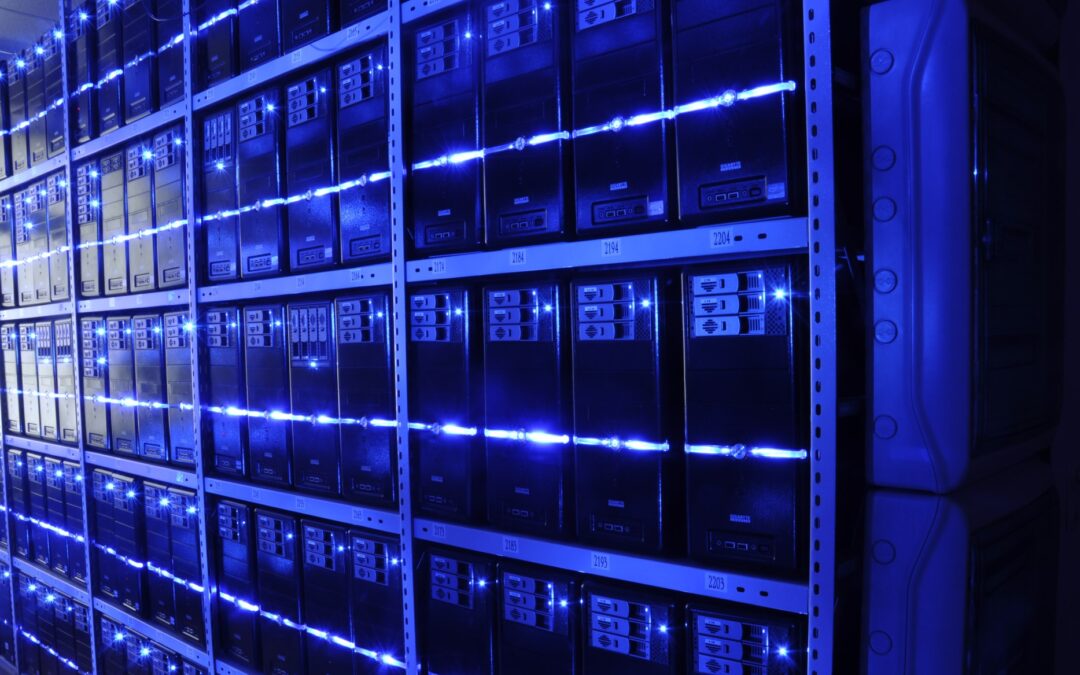By Elle Nicholson
Data centers are on the rise in Texas due to a variety of technologies. The foundations of the internet run on data centers, as do artificial intelligence (AI) and cryptocurrency mines, all of which are booming. Since data centers require copious amounts of energy for operation, they are drastically increasing levels of energy consumption for the state. Electric Reliability Council of Texas (ERCOT) CEO Pablo Vegas expressed concerns about this in a June testimony for the Texas Senate Committee on Business and Commerce, saying data centers could be responsible for about half of the added growth projected for Texas by 2030.
Texas is currently home to 342 data centers which together constantly require 7.597 gigawatts of power. For comparison, ERCOT’s 2024 energy load forecast estimates peak summer grid load at 86 gigawatts. This means as of 2024, data centers are consuming at minimum 8.8% of the state’s power—and this percentage is only going to grow in subsequent years.
On October 1st, the Texas Senate Committee on Business and Commerce met to hear invited testimony on the topic of “Managing Texas Sized Growth.” Vegas was the representative for ERCOT and presented a graph of ERCOT’s Contract and Officer Letter Growth Breakdown for 2024–2030. The graph showed summer peak load skyrocketing from the current 86 gigawatts to 148 gigawatts in 2030, and while exact figures were not given, data centers and cryptocurrency mines appeared to comprise roughly half of this growth.
The increase the ERCOT graph predicts for peak demand load could have worrying implications for the grid if growth is not carefully managed. The chief development officer for Skybox Data Centers, a corporation owning 1 gigawatt worth of data centers in Texas, recognized the need for data center alignment with the grid during his testimony in the October 1st committee hearing. He stated that Skybox is working closely with utilities to preserve this alignment.
Data centers and grid operators alike have been searching for ways to manage such growth. One potential solution is offsetting energy costs by financing new renewable sources. Data center operators tend to do this through behind-the-meter power purchase agreements (PPAs), where they sign agreements to source electricity from solar farms, wind plants, etc. in which they have invested instead of drawing it from the grid. For example, Amazon’s Solar Farm Texas Outpost is a 500-megawatt project financed by the tech giant that will supply renewable power to their data centers. This arrangement provides reliable power at a competitive cost without the hassle of owning the generation, all while adding necessary generation capacity to the grid.
Grid operators have also been exploring solutions to growth management. One possible answer lies within the data centers themselves. AI technology’s capability to perform demand forecasting means it can assist with load shifting, peak shaving, and anticipation of grid issues. Google has harnessed AI for these tasks and consequently saw the financial value of its wind power increase by 20%. Similarly, the Midcontinent Independent System Operator (MISO), which runs the Midwestern section of the U.S. grid, has been testing an AI model for potential integration into its system. The model optimizes grid operators’ daily planning, and MISO found that their calculations could be done 12 times faster with AI. In these ways, grid operators can maximize efficiency and cost-effectiveness to paradoxically reduce the capacity concerns data centers cause. Data centers will continue to grow explosively in Texas, so growth management methods such as these are likely to become increasingly relevant.
Photo credit: BalticServers.com, CC BY-SA 3.0, via Wikimedia Commons

